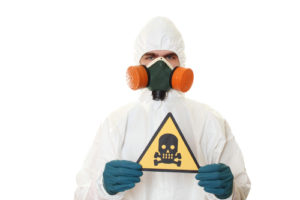A Developing Awareness of Mold’s Impact on Your Health

It’s Time to Get Stern with Your Mold!
Mold and fungus in a home should be taken seriously. According to the Centers for Disease Control and Prevention, ongoing exposure to mold spores can lead to asthma in otherwise healthy children. Mold spores can also trigger asthma attacks and allergic reactions in some people.
People with compromised immune systems are at greatest risk of developing chronic health problems as a result of mold. But you should not live in fear or panic if it is in your home. Be knowledgeable about mold and be aware.
Mold is common in many U.S. buildings
While many people think mold is most likely to exist in the dark basements or crawl spaces of older homes, the tight construction of new energy-efficient homes is also ideal for mold growth. Mold just needs moisture, organic material (wood, drywall paper, or even dust), and the right temperature to live and spread. Even without leaky plumbing or a water intrusion issue, a tightly-constructed home with relative humidity higher than 60 percent can grow mold.
Symptoms of mold sickness
Mold and fungus come in many different types and colors. Different types of mold can cause different health issues. Some people are highly sensitive and will begin having an allergic reaction almost immediately when they’re exposed to mold spores.
Mold exposure affects people differently and at different rates. Mold sickness may manifest itself with physical symptoms like sneezing, runny nose, irritated eyes, or a rash. However, some people may experience fatigue, depression, or malaise due to mold exposure.
Contact us today for a free inspection and estimate for any needed treatment. Our proprietary MoldExterm process comes with a comprehensive mold-free warranty.




